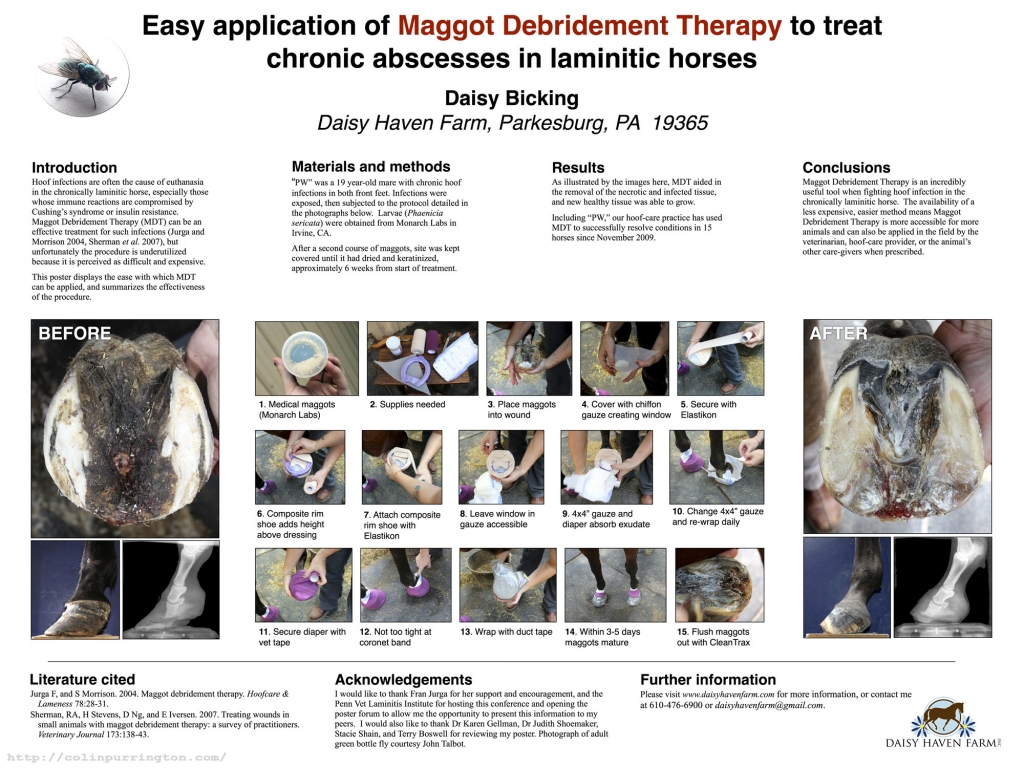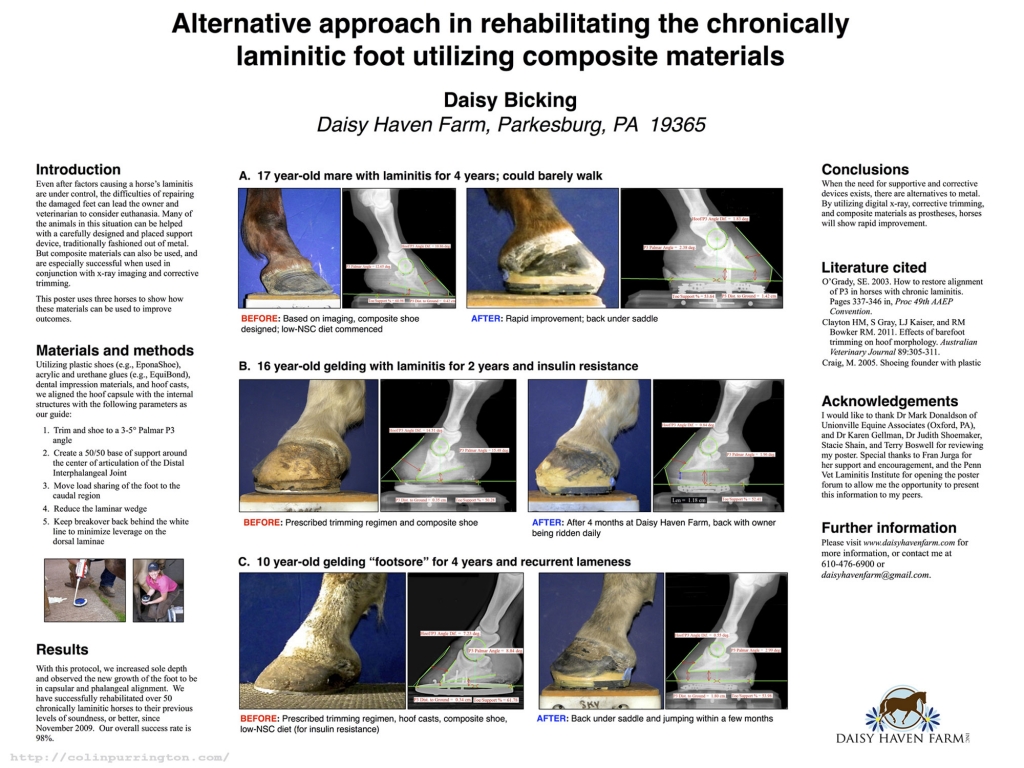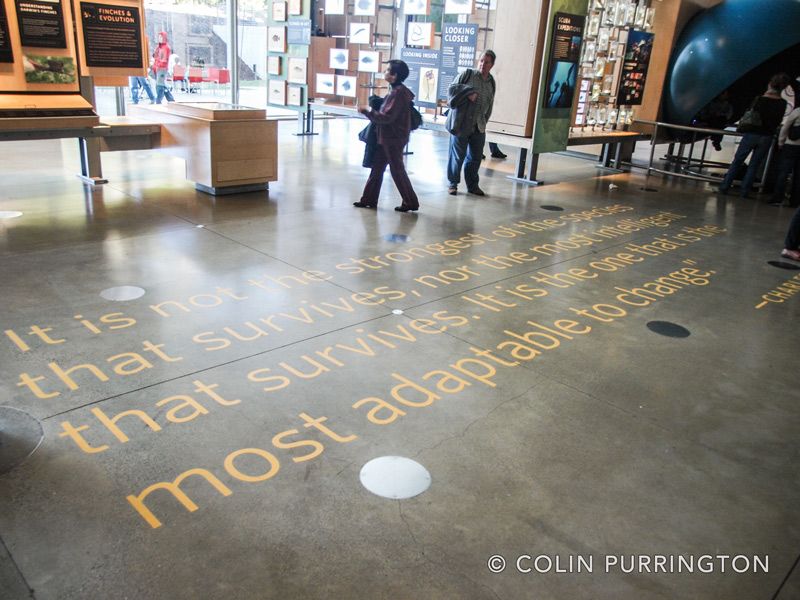In case you found this site while searching for conference poster examples, here are two from Daisy Bicking. If you like these, please see my Designing conference posters page for tips and downloadable templates.
And if you’ve found this site because you have a lame horse, you can contact Daisy for details at daisyhavenfarm@gmail.com. She’s based in West Chester, Pennsylvania (near me), but makes road trips with her crew. She also gives seminars on how to do the above, and much more. You can also follow her farm on Facebook. Tell her I sent you.



